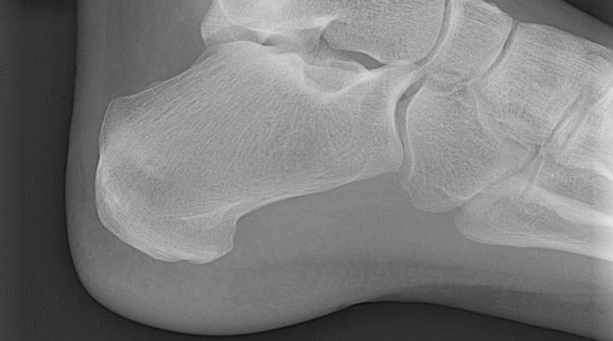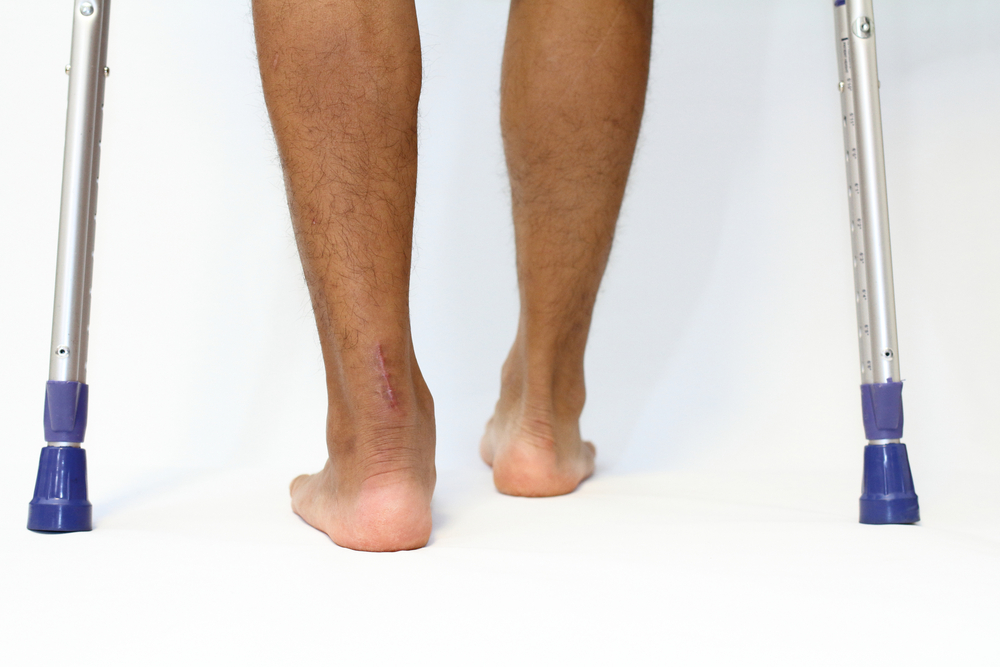A stress fracture of the calcaneus bone (calcaneal stress fracture) is the second most common stress fracture in the foot. The calcaneus (heel bone) is subjected to a lot of load when taking part in sport. The heel is generally the first part of the foot to hit the ground when running and also has the Achilles tendon pulling on the bone, so we expect a lot from that bone..
Causes of a Calcaneal Stress Fracture
A stress fracture occurs in a bone when the cumulative load applied to the bone exceeds what the bone is adapted to taking. It is an overuse injury. Bone is a remarkable tissue and can be adapted to high loads, provided any increases in loads take place slowly and gradually. If the increases in load are slow and gradual then the bone can adapt to. A stress fracture in bone will typically occur when the loads increase too quickly.
Additionally, anything that affects bone health can also increase the risk for a calcaneal stress fracture. This would include things like nutritional deficiencies.
Symptoms of a Calcaneal Stress Fracture
The classic symptom of a calcaneal stress fracture is gradually increasing pain within the heel bone with activity, often feeling within deep in the bone. A calcaneal squeeze test is almost always positive. For this test, you squeeze the heel bone between the fingers to see if the pain can be reproduced.
An x-ray will not show the stress fracture of the calcaneus until a few weeks after it occurred.
Treatment of a Calcaneal Stress Fracture
Firstly, count on it taking up to 3 months before you can get back to full activity. The only way to treat a calcaneal stress fracture is rest. You need to stop running and other weightbearing activities. You need to get off it to allow it to heal up. Some may need to get into a immobilization boot (moon boot, CAM walker) or use crutches to rest the bone. This rest is needed for 6 to 8 weeks. Other activities such as swimming can be used to maintain fitness. After 6 weeks as healing progresses a cushioning shoe or using a silicon gel heel cushion will help protect the bone.
After this initial 6-8 weeks of protected weight bearing a gradual and slow return is needed to get back to full activity. The recurrence rate of a stress fracture of the calcaneus is very high, so this return to activity is going to take a while. The load on the heel bone needs to be increased slowly, but also given time to adapt to the loads as they are increased. This includes both the amount and frequency of activity. Depending on the level that you participate in at sport and the type of sport, this can take up to 4-6 weeks, with more vigorous activities taking longer.
It is also important to address any bone health issues, such as Vitamin D deficiency and other nutritional issues.
Forum Discussions on Calcaneal Stress Fractures
Calcaneal stress fractures in minimalist/barefoot runners
Personal Opinion on Calcaneal Stress Fractures
There are only two ways to deal with this:
- Rest from activity; then:
- Very slow and gradual return to activity
I have seen too many occur again because of a failure to do (2) properly.
Author:
University lecturer, runner, cynic, researcher, skeptic, forum admin, woo basher, clinician, rabble-rouser, blogger, dad.



